-
Title (Dublin Core)
-
The truth about Japan's "mystery ships"
-
Article Title and/or Image Caption (Dublin Core)
-
The truth about Japan's "mystery ships"
-
extracted text (Extract Text)
-
TAKING shape beneath concealing roofs
of bamboo, in Japanese shipyards, war-
ships of secret design have long inspired
wild rumors. At last our advance across the
Pacific has forced the mystery craft out of
hiding. Now, for the first time, we know
what our Navy has to lick—and that infor-
mation will help it mightily to play its part
in the combination of sea, land, and air-
power pledged to the destruction of the
Japanese Empire.
Tilustrating the latest in Nipponese battle-
ships, the Yamato and Musashi first showed
themselves in the Second Battle of the Phil-
ippines. A photograph snapped from a
U.S. Navy plane, while bombs made a
shambles of the Yamato’s superstructure,
enables any layman to analyze Japan's most
powerful warship class.
Study of the picture indicates a vessel ap-
proaching the 45,000-ton size of our Iowa
class—believed to be the only men-of-war in
the world that outclass it, ship for ship. The
Yamato mounts its main battery of nine big
guns, probably 16-inchers, in the first triple
turrets to be installed aboard Jap battle-
wagons. As in standard American practice,
two turrets have been placed forward and
one aft—the latter all but obscured in the
picture by smoke and wreckage. Since the
battle, Fleet Admiral Chester W. Nimitz
has announced that the Musashi, sister ship
of the Yamato, is now definitely known to
have blown up and sunk as the result of
damage inflicted on her by U.S. carrier
planes in the same engagement.
Battleship-carriers, strangest of naval hy-
brids, have appeared in the converted Jap
battleships Isc and Hyuga. The freak ships
appear to combine the worst features of
both types. Each provides a
“flight deck” aft, a fraction of
the length of the smallest flat-
top and apparently suited only
to catapult launchings. For the
dubious advantage of the “car-
rier” feature, the two after tur-
rets of each vessel evidently
have been removed—a surpris-
ing sacrifice of firepower, which
Japan can ill afford in her re-
maining capital ships.
From what we now know of
Japan's tools of seapower, the
opposing lineups for the Battle
of Japan can now be estimated
within reasonable limits. At
most, Japan can probably mus-
ter no more than 11 battleships
to our 23—a proportion of more
than two to one in our favor. If
the Land of the Rising Sun has
another Yamato class battleship,
as naval circles here believe,
two of its capital ships are
modern, compared with 10 of
ours. These figures do not in-
clude our newly completed 27,-
000-ton Alaska and Guam, which
the U. S. Navy calls “large
cruisers”—a masterpiece of of-
ficial understatement.
In other categories of fighting
ships — carriers, cruisers, de-
stroyers, submarines—the story
again is one of overwhelming
American superiority both in
numbers and in types. Due for
completion in 1945, the mam-
moth U. S. carriers Coral Sea
and Midway, will match the 45,-
000-ton displacement of our
mightiest battleships and will
provide a take-off run long
enough for the heaviest bombers
ever launched at sea. They will
dwarf even the 33,000-ton Sara-
toga, veteran of our carrier
forces, and the 13 or more Es-
sez-type carriers of more than
25,000-ton size that we have
completed since we entered
World War II. Our latest super-
destroyers, displacing 2,200 tons,
approach small cruisers in size
and armament. And now trans-
ports and cargo landing craft,
which formerly brought troops
and supplies to beachheads al-
ready secured, are giving way to
“assault ships” that take direct
part in amphibious fighting op-
erations. Comparatively shallow
draft enables them to launch
invasion barges and cargo
lighters close to shore, and
heavy armament covers land-
ing parties while they dig in.
Top priority has been given to
mass production of these as-
sault ships, designed especially
for use against Japan.
Assault transports, or APA's
for short, land a complete com-
bat team of hundreds of men.
Simultaneously, assault cargo
ships, or AKA's, bring up am-
munition and miscellaneous
supplies. Plans for a given op-
eration call for a definite ratio
of AKA's to APA's. Larger than standard
Atlantic landing craft, the assault trans-
ports provide commodious quarters and
anti-tropical ventilation, so that the men
will arrive fresh and full of fight after a
voyage lasting for weeks instead of days.
Converting destroyers for use as fast
troop transports provides another way of
landing invasion forces. First tried out some
years ago, the experiment has proved so
successful that the APD's, as they are called, have
become standard ships of the U. S. Navy.
“Beach rockets" of 4 1/2-inch size, which blast shore
defenses with the punch of 105-mm. artillery shells,
now are fired in salvos by specialized landing craft
carrying hundreds of them, according to a recent
statement by Rear Admiral George F. Hussey, Jr.,
Chief of the Navy Bureau of Ordnance. Owing to
the stepped-up tempo of the Pacific war, rocket-firing
ships and planes will require a threefold increase
over the nearly $100,000,000-a-month production of
the projectiles a few months ago, the Navy esti-
mates. Besides explosive rockets, the Navy employs
incendiary rockets for obtaining range,
and smoke rockets for screening
troops.
“This should be bad enough news for
Japan's naval commander in chief,
‘Admiral Mineichi Koga—if he has
managed to survive the rapid tum.
over of Nippon's war leaders—but
worse is yet to come. A powerful new
British ficet under Admiral Sir Bruce | |
A. Fraser, including ultramodern bat- yg
Heships and carriers, will fulfill Prime
Minister Churchill's promise of sea-
power to help America crush Japan.
Not to be confused with the British
force in the Indian Ocean, the Pacific
armada will be based on Australia,
and is expected to operate in close
teamwork with Fleet Admiral Chester
W. Nimitz and with General of the
Army Douglas MacArthur.
These, then, are the tools of Japa-
nese and Allied seapower—so far, a one-
sided picture. How about the men who use
them? Best-informed opinion ranks Jap
naval officers and men as the cream of the
Empire's armed forces, whose fanatical
courage makes overconfidence on our part
supreme folly. Even with their depleted
battle fleet, they may confidently be ex-
pected to pounce upon any advantage that
our extended lines and the slightest mis-
calculation may give them. Thoroughly
schooled In the unwritten “rule book” of
naval warfare, they perform at their best
50 long as everything goes according to
plan—as in their sneak attack on Hawaii.
But they have their weaknesses, too. Let
plans go awry, and the Jap totally lacks
Yankee initiative to grasp and exploit an
unexpected situation. And incompetence in
his high command, elevated to exalted posts
by the feudal system of caste rather than
for merit, has had an unfortunate way of
placing him in just such embarrassing posi-
tions. For six months, the Japs delayed
pressing home their temporary advantage
at Pearl Harbor—and then dispatched a
fleet of warships and troop transports to
seize Hawail.
They never got there, because they had
given us enough time to reorganize a fight-
ing fleet powerful enough to hurl them back
with smashing losses in the Battle of Mid-
way. Later, when our own amphibious
forces seized the offensive in the Solomon
Islands, Nipponese warships staged a whole
series of attacks in gradually increasing
strength. Why they failed to use their full
power at first can be explained only by the
inscrutable Oriental mind; as it was, we
were able to reinforce our embattled fleet
rapidly enough to repel every onslaught.
From that time until last October the
constant question was, “What will make the
Jap fleet come out and fight?” The answer
came when MacArthur invaded the Philip-
pines, with the obvious objective of taking
Manila and its strategic naval base astride
Japan's life lines to her southern conquests.
‘And the result was the Second Battle of the
Philippines—actually three battles in one—
where mighty battleships slugged it out
with shells in the rare and awesome spec-
tacle of a full-dress fleet action.
It was o desperate gamble, since it com=
mitted virtually all of Japan's warships, but
a better move than to wait until growing
Allied seapower sealed the gates of the Em-
pire. From southern Asia outposts, a pair
of Jap fleets sought to thread the two main
passages through the Philippines and meet
in a pincers movement, where MacArthur's
supposedly vulnerable Invasion craft were
unloading reinforcements and supplies on
the {sland of Leyte. Meanwhile, a third Jap
fleet approaching from the north would pro-
vide support. If complete surprise could be
obtained, so much the better.
Wary of just such a move, however, Vice
Admiral Thomas C. Kinkaid had posted
U. S. submarines as lookouts on the western
side of the Philippines, meanwhile guarding
MacArthur with his 7th U. . Fleet of bat-
tleships and lighter craft—supplemented by
Australian cruisers and destroyers. Prompt-
ly the subs detected the invaders and flashed
him warnings. Shortly after, a scouting
plane sighted the Jap fleet from the north,
and relayed a message to Admiral William
F. Halsey's U. S. Third Fleet of fast battle-
ships and carriers, roving farther to sea.
Cramming on speed, Halsey sped north
and intercepted the surprised Japs at dawn.
Before they knew what had hit them, their
four carriers were sunk—and the rest of the
ships, many damaged, turned tail. Reluc-
tantly abandoning pursuit, Halsey dashed
south again, in response to a report that the
U.S. defenders of San Bernardino Strait
were having their troubles with the central
Japanese force.
And so they were. Baby flat-tops on
watch in the channel found themselves con-
fronted with an overwhelming Jap fleet, in-
cluding two 45,000-ton battleships. Gallant
U. 8. destroyers braved mortal peril to lay a
smoke screen behind which the light carriers
retired—into a providential east wind that
enabled them to launch their planes on the
run. Circling back, the aircraft pounded the
oncoming Japs with such fury that they
made slow progress, although they overtook
and destroyed a few light American craft.
Forcing the passage into the Pacific, the
Japs started toward Leyte—and then mys-
teriously turned back and fled the way they
had come.
Evidently their commander, the Navy
concludes, must have received word of the
fate of the northern Jap force, and also of
the southern Jap fleet which had sought to
negotiate the Surigao Strait at night. Here
Admiral Kinkaid had laid a neat trap of
battleships and supporting forces.
Dark silhouettes of the Jap warcraft sud-
denly stood out against a fiery sky as PT
boats, destroyers, and cruisers opened the
engagement. Then, with a thunderous crash,
the U. S. battleships spoke their piece.
Their commander had accomplished an ad-
miral’s dream by crossing the enemy's “T.”
or steaming across the head of his adver-
sary's battle line—which enabled him to
bring all his guns to bear while only the for-
ward guns of the enemy ships could reply.
To make things perfect, the Japanese
elected to escape by turning in column, or
follow-the-leader fashion. The first ship
gave the range, and practically every sub-
sequent U. §. salvo crashed home. Save for
a destroyer or two, every ship of the south-
ern Jap contingent, including the battleships
Fuso and Yamashiro, went to the bottom.
In the triple engagement, these two battle-
ships, four carriers, and six Jap cruisers
were definitely seen to sink, while 13 other
major warships were presumably knocked
out of action for from one to six months.
Old scores were settled in that and near-
by actions. Five battleships damaged at
Pearl Harbor, refitted and as good as new,
avenged themselves is the Surigao Strait
affair—the Pennsylvania, Maryland, Tennes-
see, California, and West Virginia. One
other battleship, the Mississippi, shared hone
ors with them.
-
Contributor (Dublin Core)
-
Alden P. Armagnac (article writer)
-
Language (Dublin Core)
-
eng
-
Date Issued (Dublin Core)
-
1945-02
-
pages (Bibliographic Ontology)
-
90-96,228,232
-
Rights (Dublin Core)
-
Public domain
-
Archived by (Dublin Core)
-
Sami Akbiyik
-
Marco Bortolami (editor)
 Popular Science Monthly, v. 146. n. 2. 1945
Popular Science Monthly, v. 146. n. 2. 1945
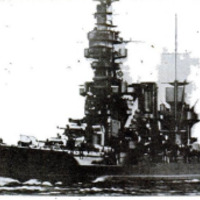 Ekran Resmi 2022-10-05 19.17.21.png
Ekran Resmi 2022-10-05 19.17.21.png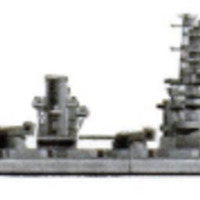 Ekran Resmi 2022-10-05 19.17.26.png
Ekran Resmi 2022-10-05 19.17.26.png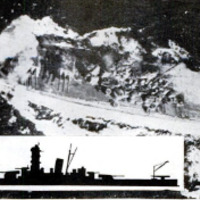 Ekran Resmi 2022-10-05 19.17.36.png
Ekran Resmi 2022-10-05 19.17.36.png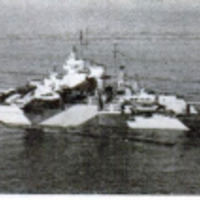 Ekran Resmi 2022-10-05 19.18.01.png
Ekran Resmi 2022-10-05 19.18.01.png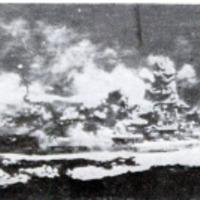 Ekran Resmi 2022-10-05 19.17.47.png
Ekran Resmi 2022-10-05 19.17.47.png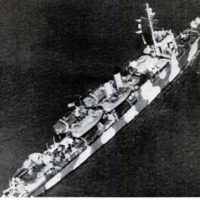 Ekran Resmi 2022-10-05 19.18.11.png
Ekran Resmi 2022-10-05 19.18.11.png Ekran Resmi 2022-10-05 19.18.01.png
Ekran Resmi 2022-10-05 19.18.01.png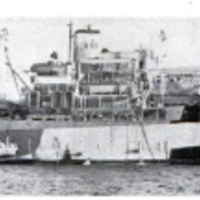 Ekran Resmi 2022-10-05 19.18.06.png
Ekran Resmi 2022-10-05 19.18.06.png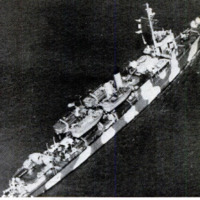 Ekran Resmi 2022-10-05 19.18.11.png
Ekran Resmi 2022-10-05 19.18.11.png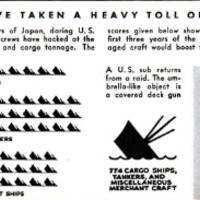 Ekran Resmi 2022-10-05 19.18.21.png
Ekran Resmi 2022-10-05 19.18.21.png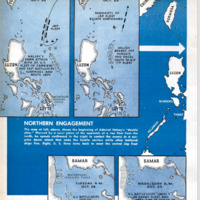 Ekran Resmi 2022-10-05 19.18.27.png
Ekran Resmi 2022-10-05 19.18.27.png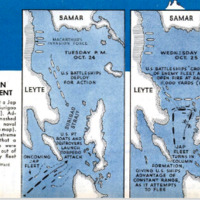 Ekran Resmi 2022-10-05 19.18.37.png
Ekran Resmi 2022-10-05 19.18.37.png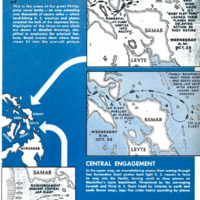 Ekran Resmi 2022-10-05 19.18.44.png
Ekran Resmi 2022-10-05 19.18.44.png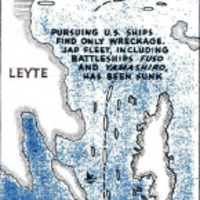 Ekran Resmi 2022-10-05 19.18.52.png
Ekran Resmi 2022-10-05 19.18.52.png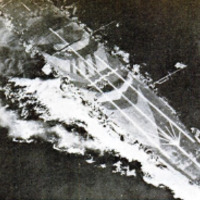 Ekran Resmi 2022-10-05 19.18.58.png
Ekran Resmi 2022-10-05 19.18.58.png














